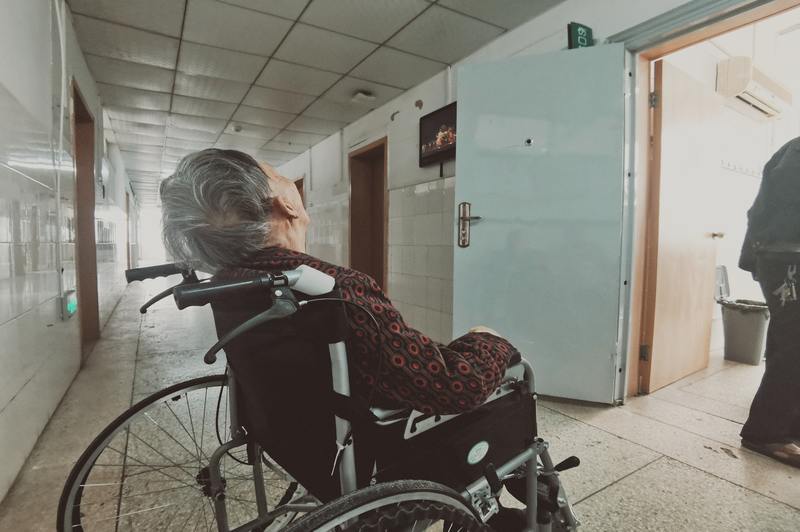Learning the proper ways on how to transfer patient from bed to chair, even at home, means less risk of injuries for both you and the patient. And when we say proper, it conveys every careful and correct step, as patient’s safety tops your priorities.
There are several reasons why to transfer a patient to a chair or a wheelchair. Moving and relocating a stroke patient, for instance, is necessary from time to time as they can stretch and practice their movement. He can also breathe in fresh air by roaming around a garden or hospital lounge.

While such patients should stay in bed to avoid unexpected injuries, it is also suitable for them to change their surroundings. Additionally, cases such as emergency patient transfers could be a prime reason to relocate a patient from a bed to a wheelchair. Nonetheless, we provide here the proper steps to ensure you and your patient’s safety.
Transferring A Patient From Bed To Chair
Step #1. Pre-transfer activity
Before anything else, ensure that the chair you’ll be transferring the patient to is stable and firmly standing. For a wheelchair, confirm if the brakes are on and fold the footrests. Clear any slippery rugs from the floor surface.
Position the chair near and aligned with the bed. It must be slightly facing the head of the bed.
Then, ready the patient for transfer by making him sit up at the edge of the bed. Before executing this, first, you need to communicate with the patient and explain why and how you will transfer him. Let him know every movement you both need to make for a successful allocation.
You may now proceed to sit up the lying patient. Assist the patient to be in a side-lying position, facing towards your direction and the chair.
To sit up the patient, place your right forearm at the back shoulders of the patient and your left forearm at his back, knees, or thighs. Lift him slowly as you make him sit.
With one hand and arm at the patient’s back knees, carefully swing his feet at the side of the bed. Ensure with this particular step to bend and lower your knees to support his trunk and shoulders fully.
Step #2. Standing patient up
Now it’s time to prepare him to stand. First, ask the patient to lay his feet flat on the floor after wearing skid-proof shoes or socks.
Then, wrap your arms slightly around his trunk while he holds onto your waist and not on your shoulders. Position one leg (one farthest from the chair) of the patient in between your legs. This will provide stability for the patient’s leg and knees and avoid slipping when transferring.
Carefully raise him to a standing position while maintaining your bent-knee position but straightening your back.
Step #3. Transferring
Before executing the transfer, instruct the patient to reach and seek support from the armrest while being cautiously transferred. Then, pivot him smoothly towards the chair.
Step #4. Sitting patient up
Assist the patient to be comfortable in his seating position. Ensure he is seated at the center and that his body is entirely rested on the center seat and chair back.
You also have to displace your weight from back to front with your elbows and knees slightly bent while assisting. Relocate the footrests and lay the patient’s feet on them.
How To Transfer A Patient With A Gait Belt?
The process is almost the same with the steps incorporated without using any assistive medical devices. The only distinction is, noticeably, the usage of a gait belt.
After preparing the patient for transfer, put on a gait belt around his waist. However, note the particular upper body areas where a gait belt is prohibited from being placed.
Next, grasp the back of the belt to hold onto the patient while standing and transferring him to the chair. Then, remove the gait belt upon assisting him on his seat.
What Are The Best Assistive Devices For Transferring Patients?
While it’s possible to do the transfer without any device, various of them can be used to assist a helper in transferring a patient from a bed to a chair. Aside from a gait belt, a sliding board is placed on both the bed and chair’s surface. The patient can easily slide himself along the board.
Another helpful device is a transfer disc that supports patients who have difficulty turning while transferring onto a chair or bed. There also exists the patient turner, which is more helpful for individuals with pivot-turning struggles.
Finally, a device called one-way glide helps reposition the patients to a seat comfortably and conveniently.
Conclusion
In following the steps on how to transfer patient from bed to chair, you need to be very cautious. Also, before doing a patient transfer, ensure to equip yourself with knowledge. Although this guide may be helpful for an ordinary household, it would still be best to seek assistance from medical personnel.
